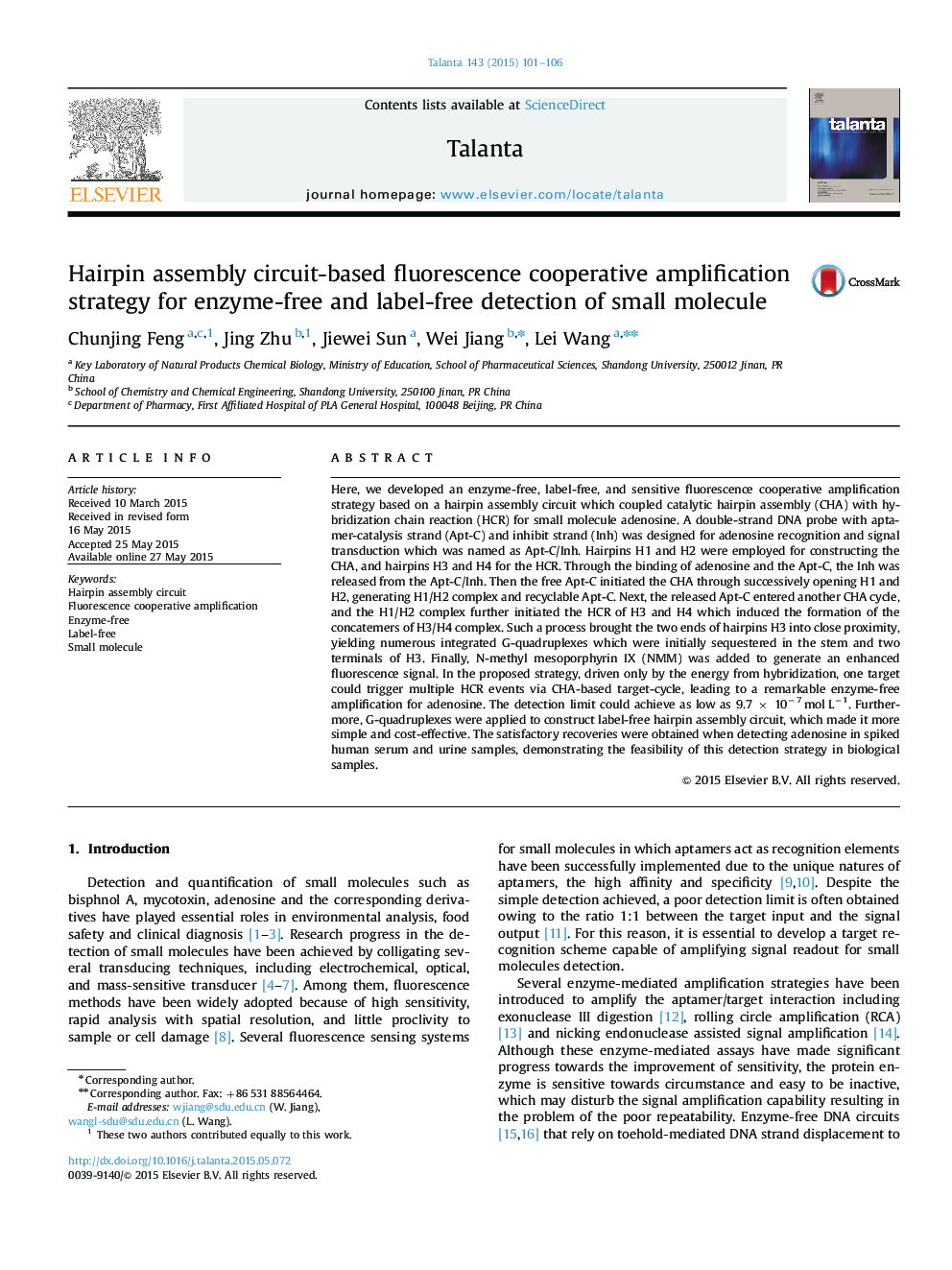| کد مقاله | کد نشریه | سال انتشار | مقاله انگلیسی | نسخه تمام متن |
|---|---|---|---|---|
| 1241861 | 1495792 | 2015 | 6 صفحه PDF | دانلود رایگان |
• A hairpin assembly circuit-based cooperative amplification strategy was developed.
• The designs of recognition probe and hairpins improved the background leakage.
• The CHA-based target cycle process makes one target trigger multiple HCR events.
• The strategy achieved enzyme-free and label-free fluorescent detection for adenosine.
Here, we developed an enzyme-free, label-free, and sensitive fluorescence cooperative amplification strategy based on a hairpin assembly circuit which coupled catalytic hairpin assembly (CHA) with hybridization chain reaction (HCR) for small molecule adenosine. A double-strand DNA probe with aptamer-catalysis strand (Apt-C) and inhibit strand (Inh) was designed for adenosine recognition and signal transduction which was named as Apt-C/Inh. Hairpins H1 and H2 were employed for constructing the CHA, and hairpins H3 and H4 for the HCR. Through the binding of adenosine and the Apt-C, the Inh was released from the Apt-C/Inh. Then the free Apt-C initiated the CHA through successively opening H1 and H2, generating H1/H2 complex and recyclable Apt-C. Next, the released Apt-C entered another CHA cycle, and the H1/H2 complex further initiated the HCR of H3 and H4 which induced the formation of the concatemers of H3/H4 complex. Such a process brought the two ends of hairpins H3 into close proximity, yielding numerous integrated G-quadruplexes which were initially sequestered in the stem and two terminals of H3. Finally, N-methyl mesoporphyrin IX (NMM) was added to generate an enhanced fluorescence signal. In the proposed strategy, driven only by the energy from hybridization, one target could trigger multiple HCR events via CHA-based target-cycle, leading to a remarkable enzyme-free amplification for adenosine. The detection limit could achieve as low as 9.7 × 10−7 mol L−1. Furthermore, G-quadruplexes were applied to construct label-free hairpin assembly circuit, which made it more simple and cost-effective. The satisfactory recoveries were obtained when detecting adenosine in spiked human serum and urine samples, demonstrating the feasibility of this detection strategy in biological samples.
Figure optionsDownload as PowerPoint slide
Journal: Talanta - Volume 143, 1 October 2015, Pages 101–106
